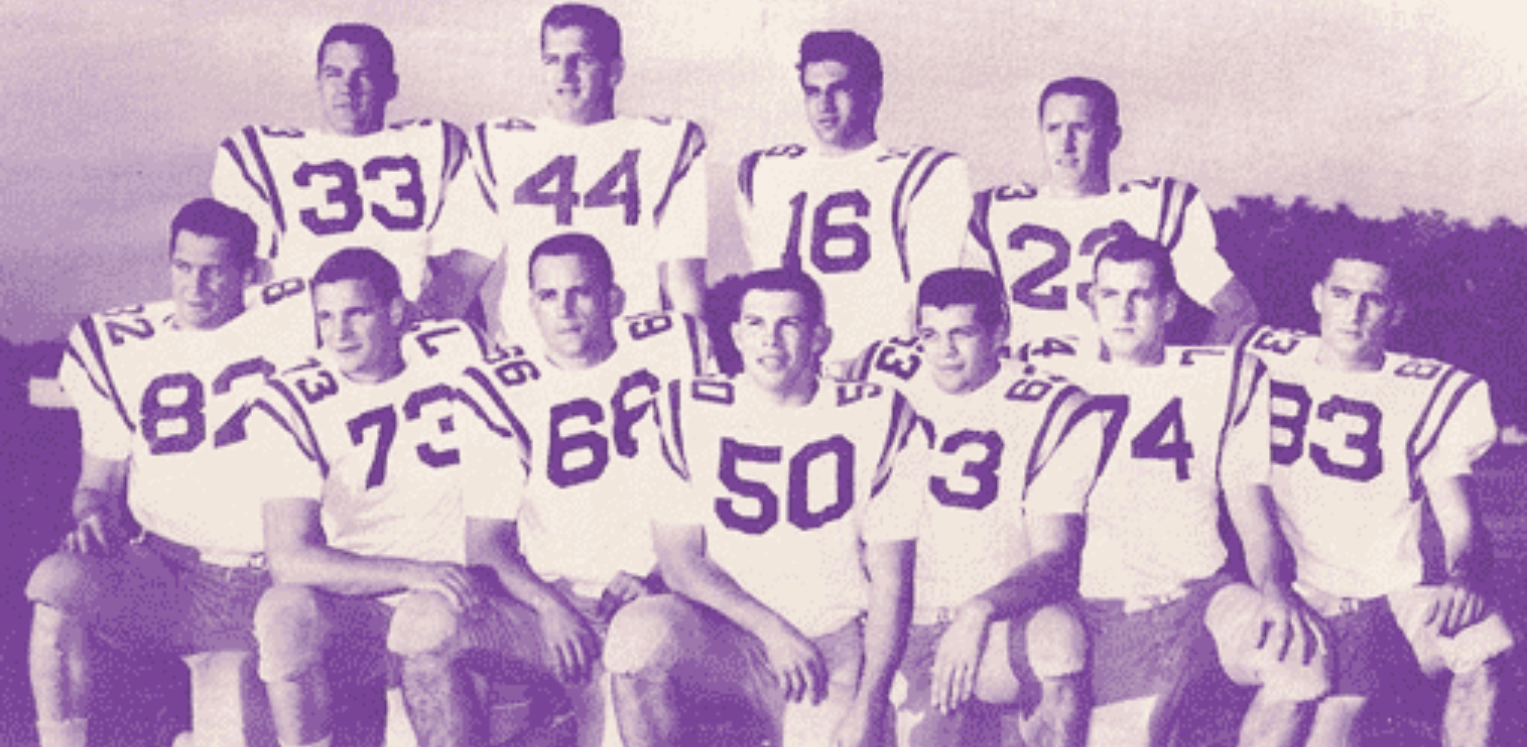The Chinese Bandits of LSU

November, 24 2023
Until college football adopted two platoon football on a permanent basis in the mid 1960’s, full time defensive platoons and defensive platoon nicknames were an impossibility.
While substitution rules had minor changes each year, the basic rule was that if a player left a game during a quarter, he could not return until the start of the next quarter. This meant that players had to be skilled at both offense and defense.
Once college football allowed free substitution, coaches employed two platoon football of offensive and defensive specialist. Defensive platoon nicknames such as Nebraska’s “Blackshirts”, Southern California’s “Wild Bunch” and Georgia’s “Junkyard Dawgs”; began to be used.
There was one exception during the one platoon era in which a coach had a defensive platoon that was given a memorable nickname that led to a national championship.
Paul Dietzel was one of a long line of coaches who traced his football roots to Miami (OH). The Oxford, Ohio school is where coaches such a Paul Brown, Woody Hayes, Ara Parseghian, Bo Schembechler, Weeb Ewbank, Sid Gillman, Carm Cozza, Earl Blaik and even Hall of Fame manager Walter Alston can trace their lineage.
Dietzel began his coaching career in 1948 and worked for three Hall of Fame coaches – Red Blaik (Army), Sid Gillman (Cincinnati) and Bear Bryant (Kentucky). He gained his first head coaching job at Louisiana State in 1955. After three seasons he had a sub .500 career record of 11-17-2. His record improved dramatically as he installed a unique three platoon system during the one platoon era.
Previously a coach rested his first team by substituting his second team. Both units would need to be able to play both offense and defense. While not a hard and fast rule, most teams would have the first team play perhaps three quarters of the game with the second string playing anywhere between 15 and 20 minutes of the contest.
Dietzel’s plan was to have his first team, (his 11 best overall players) play both offense and defense for most of the game. As LSU wore white home uniforms, he called this unit that included 1959 Heisman winner Billy Cannon and Pro Football Hall of Famer, Johnny Robinson, the “White Team.” In place of a second unit of overall players, Dietzel created a specialized offensive platoon known as the “Go Team”, and a group of defensive specialists known as the “Chinese Bandits”.
While a defensive line coach at Cincinnati, Dietzel had used the nickname for his defensive unit. Dietzel read the comic strip “Terry and the Pirates.” In the adventure strip set in southeast Asia; the most frightening villains Terry Lee encountered were the “Chinese Bandits.” Dietzel felt that the Bandits were “the meanest and most vicious people in the world. Milton Caniff, the strip’s creator, later designed the buckeye leaf award decals used on Ohio State’s football helmets.
Depending on whether LSU was on offense or defense Dietzel would substitute for the “White Team” midway to late in the quarter with either the “Go Team” or the “Bandits.” For example: If the “White Team” had possession of the ball and came to the bench with five minutes left on the clock, he would replace them with the “Go Team”. If they scored, turned the ball over, or punted with time left on the clock, they would be substituted with the “Chinese Bandits”.
Dietzel did a remarkable job in the timing of his substitutions where he was rarely forced to use the “Bandits” on offense or the “Go Team” on defense.
In 1958, Dietzel’s “Bayou Bengals” went 11-0 and captured the National Championship. His three-platoon system was then copied by numerous coaches. He followed the ’58 national title with a #3 final national ranking in both 1959 and 1961.
Dietzel left LSU for Army in 1962 where he took his three-platoon system with him. In the Navy game of that year, his opposing coach was Hall of Famer Wayne Hardin. In a mocking gesture to the Bandits, Hardin placed on the Navy helmets the phase “Beat Army” in Chinese lettering. That helmet is on display in the Rivalry section of the Hall of Fame.